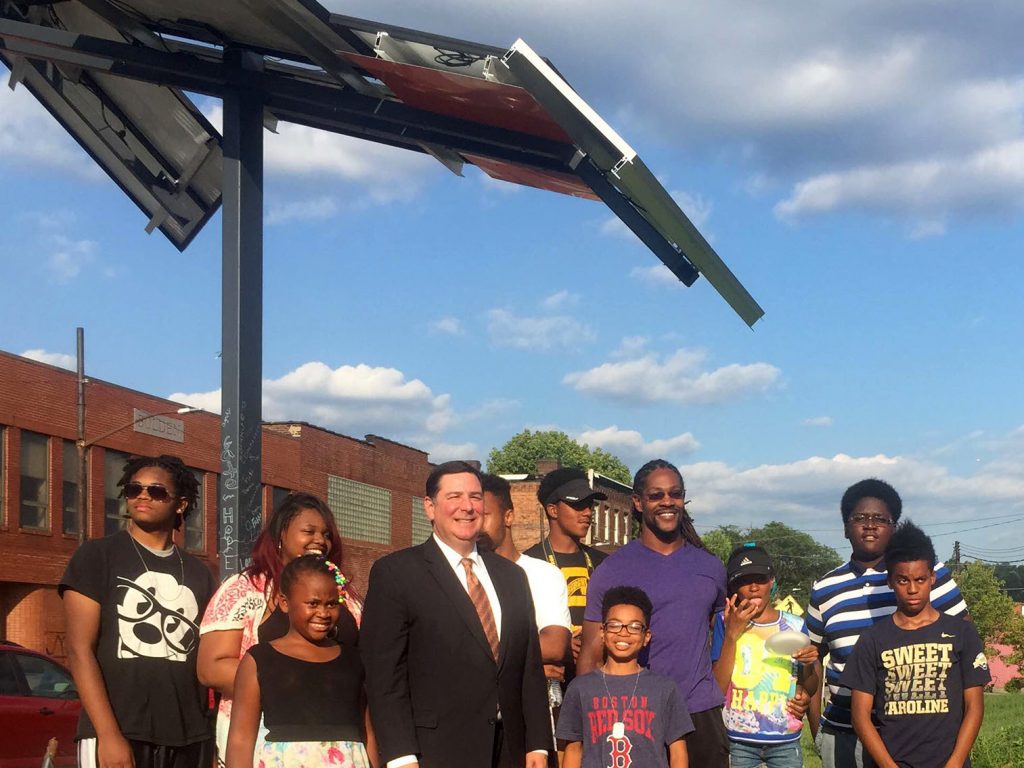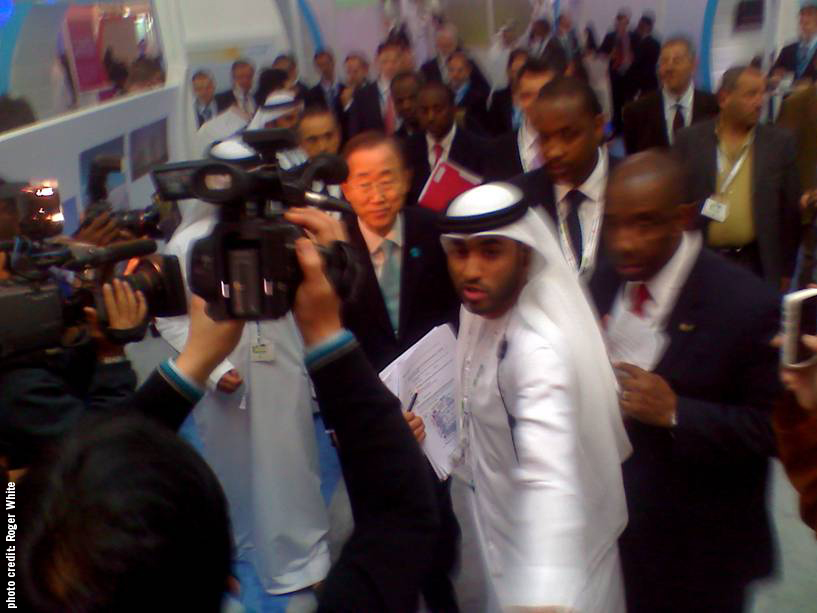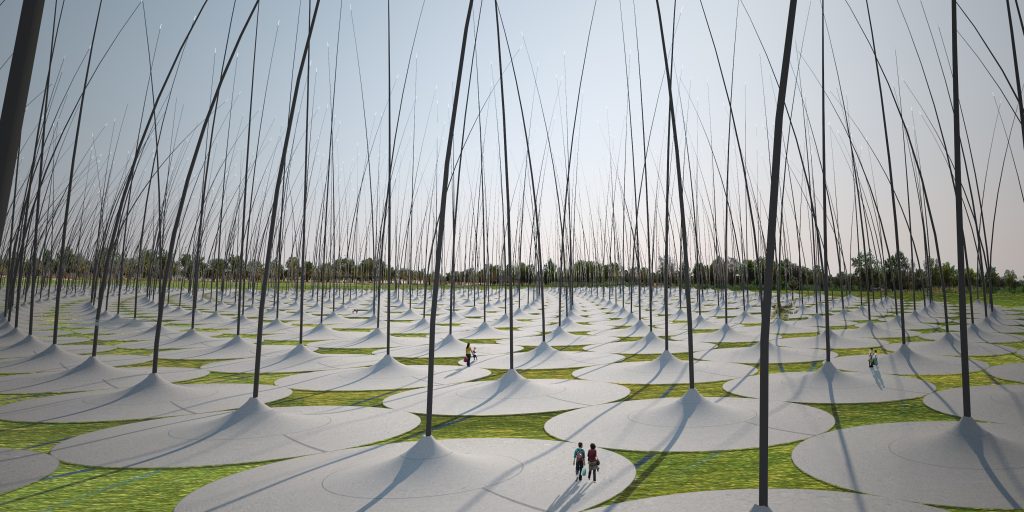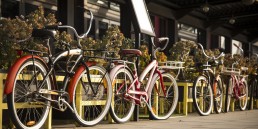As we enter a new decade it is helpful to reflect back on the progress that has been made on climate change and how much has yet to be done. The groundwork has been very well laid through research, product development, political action, climate communications, and by accelerating cultural awareness through the arts. Now it is time to implement solutions at scale in the world. Hopefully we will look back on the 2020s as the decade of deployment!
1980s: DECADE OF AWAKENING
Thanks to excellent investigative journalism from Inside Climate News and others, it came to light in 2015 that the companies whose business models rely on the extraction and sale of fossil fuels have been aware of the problem of CO2 pollution since at least the 1960s (although the science goes back much further). It was not until the 1980s that the general public began to understand the science of global warming.
The 1980s could be considered the “decade of awakening” on climate—awakening by the public to the existential threat to our survival that CO2 pollution represents, awakening to the need to transition our economy away from carbon-polluting forms of energy and industry. The episode “Heaven and Hell” of COSMOS aired on October 19, 1980. Carl Sagan brought the idea of global warming to the general public in a gripping way by relating his studies of the atmosphere of Venus and asking the question, “could the same thing happen here?” It was 1988 when the Intergovernmental Panel on Climate Change (IPCC) was founded. James Hansen gave his statement on the greenhouse effect that same year as Director of the NASA Goddard Institute for Space Studies.
1990s: DECADE OF STRATEGY AND CONFUSION
The 1990s was the decade where the lines were drawn in the political debate around global warming policy. In 1992 the UN Framework on Climate Change beginning the annual Confrerence of Parties (COP) meetings meant to coordinate global action. It was also a decade of confusion as the lobby working to advance the interest of the fossil fuel industry worked tirelessly to confuse the public and muddy the waters around climate science communications. Their efforts can be seen as instrumental in the United States deciding not to ratify the Kyoto Protocol at the end of the decade.
2000: DECADE OF DESPAIR AND DENIALISM
While the lines were drawn and the communications strategies were worked out in the 1990s, it was the 2000s when things started to heat up significantly in the public sphere. In 2005, the Category 5 Hurricane Katrina made landfall, killing 1,200 people and displacing more than one million. The following year saw the release of An Inconvenient Truth in which vice President Al Gore clearly communicated the link between climate change and increasingly frequent and devastating natural disasters. A noble attempt to cut through the confusion, the film and the activism it inspired motivated people around the world and brought the issue truly into popular culture. It also served as a convenient punching bag for climate denialists, who hit their stride in the 2000s as the very concept of scientific consensus became the focus of their well-funded efforts to highlight uncertainty. Misinformation campaigns took to the new platforms of Facebook and Twitter, bypassing the major media information gatekeepers. Denialism leveraged the fact that climate science is a science of statistical probabilities and the modeling of many interrelated variables within Earth’s complex physical systems. NIMBYism (not-in-my-backyard) came of age in the 2000s as well, as wind farms and solar arrays started to proliferate near to population centers and cherished natural places.
2010: DECADE OF HOPE
It was into this context of climate despair and reactionism that we founded the Land Art Generator initiative in 2008 and prepared to launch our first design competition in 2010. Our goal was to create a platform that could provide answers to the NIMBYs who didn’t like what renewable energy looked like. We wanted to take that tool of objection away from those who would slow progress on the energy transition. We wanted to present a new approach to energy landscapes by presenting images of a post-carbon world that we can all desire, regardless of politics or positions on climate science.
By using clean energy technology as the medium for public art and creative placemaking, we can beautify our cities, make them more sustainable, and get creatives involved in designing real climate solutions. Enough with the climate science focus on doom and gloom! Let’s give people a message of hope, let’s educate and inspire a diverse public, and let’s get people excited about the beauty of a renewable energy future!

In 2015, following on the success of three LAGI design competitions for professionals and university students, we began holding workshops and providing project-based learning opportunities for middle school and high school students. Our 2015 Art+Energy Camp in the Homewood neighborhood of Pittsburgh demonstrated that community energy projects can aspire to be more than ground-mounted solar panels surrounded by chain link fences…that we can instead co-design our energy landscapes in collaboration with the people who live around them, so that they can become public parks and amenities, helping to drive economic development and providing learning opportunities for people of all ages. By doing so we can instill a sense of pride and ownership in our renewable energy infrastructures.
The 2010s saw the rise of many other organizations and movements, such as the Ellen MacArthur Foundation, educating and inspiring about circular economies that consider the full life cycle of our products and systems. The Living Building Challenge certification raised the bar on the assessment of embodied and operational carbon within our constructed environment. Naomi Klein’s 2014 book “This Changes Everything” pointed the way to an intersectional approach to the energy transition. Sunrise Movement, This Is Zero Hour, and Greta Thunberg’s Fridays for Future strikes captured the imaginations of the world, and activated a new generation of climate leaders. The genre of Solar Punk emerged as a clearinghouse for techno-optimism in science fiction writing. VP Al Gore dedicated his 2017 sequel to An Inconvenient Truth to the notion that we must transcend climate despair. Elon Musk dazzled the world throughout the decade with new product launches in electric vehicles and solar rooftops. Last but not least in this shortlist of hopeful events is the United States House of Representatives passing of the Green New Deal resolution in May 2019. If you haven’t read all 14 pages of this historic text, you really must! All of this took place at the same time as breakthroughs in science, engineering, and production saw the cost of solar and wind energy drop precipitously to the point where the levelized cost of energy from renewables makes it difficult for incumbent energy to compete.
In April of 2019, for the first month in history, renewable energy power plants provided more electricity in the United States than did coal-fired power plants. The following month, the United Kingdom went an entire week without any coal-fired electricity. Given the plummeting costs of solar and storage technologies, it won’t be long until the same will be said for renewable energy versus natural gas. In fact, in new construction power purchase contracts, solar with battery storage is beginning to outbid natural gas power plants. In late 2019 the Los Angeles Department of Water and Power purchased 400 megawatts of solar and 300 megawatts of energy storage with a 25-year agreement at a fixed price of under 2¢ per kilowatt-hour (3¢ with storage)—far below the ability of natural gas, nuclear, or coal-fired power plants to compete. Solar for less than 2¢ per kilowatt-hour is the new normal for large-scale projects such as those in the UAE, Saudi Arabia, and the American southwest. Wind power is making similar strides in market price dominance over conventional energy, with onshore purchase agreements also at coming in at around 2¢ per kilowatt-hour.
2020: DECADE OF DEPLOYMENT
The next ten years will be all about action. As the cost of renewables has made the energy transition an inevitability, now more than ever it is critically important that we intentionally design our new energy solutions so that they can bring the greatest benefit to the greatest number of people. No one should be left behind in this revolution, especially those whose landscapes, water, and air quality were the victims of the previous energy revolution, and whose neighborhoods sit on the front lines of climate change. The advances in technology over the past decade make this possible, and they also open opportunities for us to invest more in the equity and aesthetics of these new infrastructures.
The LAGI 2020 Fly Ranch design challenge, which opens on January 15th and closes on May 31st, is all about action. It is a partnership with Burning Man Project, an organization formed by a global community of doers and makers. In 2021, selected projects will be prototyped on site at Fly Ranch, setting the stage for a demonstration of closed-loop systems in a harsh off-grid environment.
It has been ten years since we launched the Land Art Generator with our first open call design competition that opened on January 18th, 2010 for three design sites in Dubai and Abu Dhabi. Masdar sponsored the competition and hosted the LAGI 2010 exhibition as an integral part of their exhibit at the 2011 World Future Energy Summit in Abu Dhabi, where Ban Ki-moon was guided through and told, “renewable energy can be beautiful.” The first place award was presented by Dr. Nawal Al-Hosany to Robert Flottemesch and team for Lunar Cubit, a simple gesture of frameless solar panels cladding a set of pyramids to produces 3.5 gigawatt-hours of electricity per year, while tracking the cycle of the moon and illuminating its phases.

Over the past decade, thousands of incredibly creative and talented people from more than 80 nations around the world have participated in the LAGI design challenges in cities such as New York City, Copenhagen, Santa Monica, Melbourne, Glasgow, Willimantic, and Masdar City. We could not be more grateful everyone who has been a part of the LAGI challenges, especially those designers who have participated from the beginning and in more than one competition. Your creativity has inspired the world over the past decade. Now as we look to the next decade we are lifted by your visions of the beauty of life in carbon balanced world. We look forward to building as many of the designs in the LAGI portfolio as we possibly can in the years to come.

When our grandchildren look back upon the sustainable infrastructures that we build over the next decade, what will they see? They will see solar farms, wind turbines, and transmission pylons. They will see facilities dedicated to zero waste, anaerobic digesters, and biochar plants. They will see net-zero water treatment facilities and sustainable transportation hubs. But what exactly will this infrastructure look like, how will it relate to human culture, and how will it impact the aesthetics of our cities and our rural landscapes?
Please join us and support us in the 2020s as we attempt to answer these questions and help to set a high bar for excellence and inspiration in the design of a post-carbon world.

